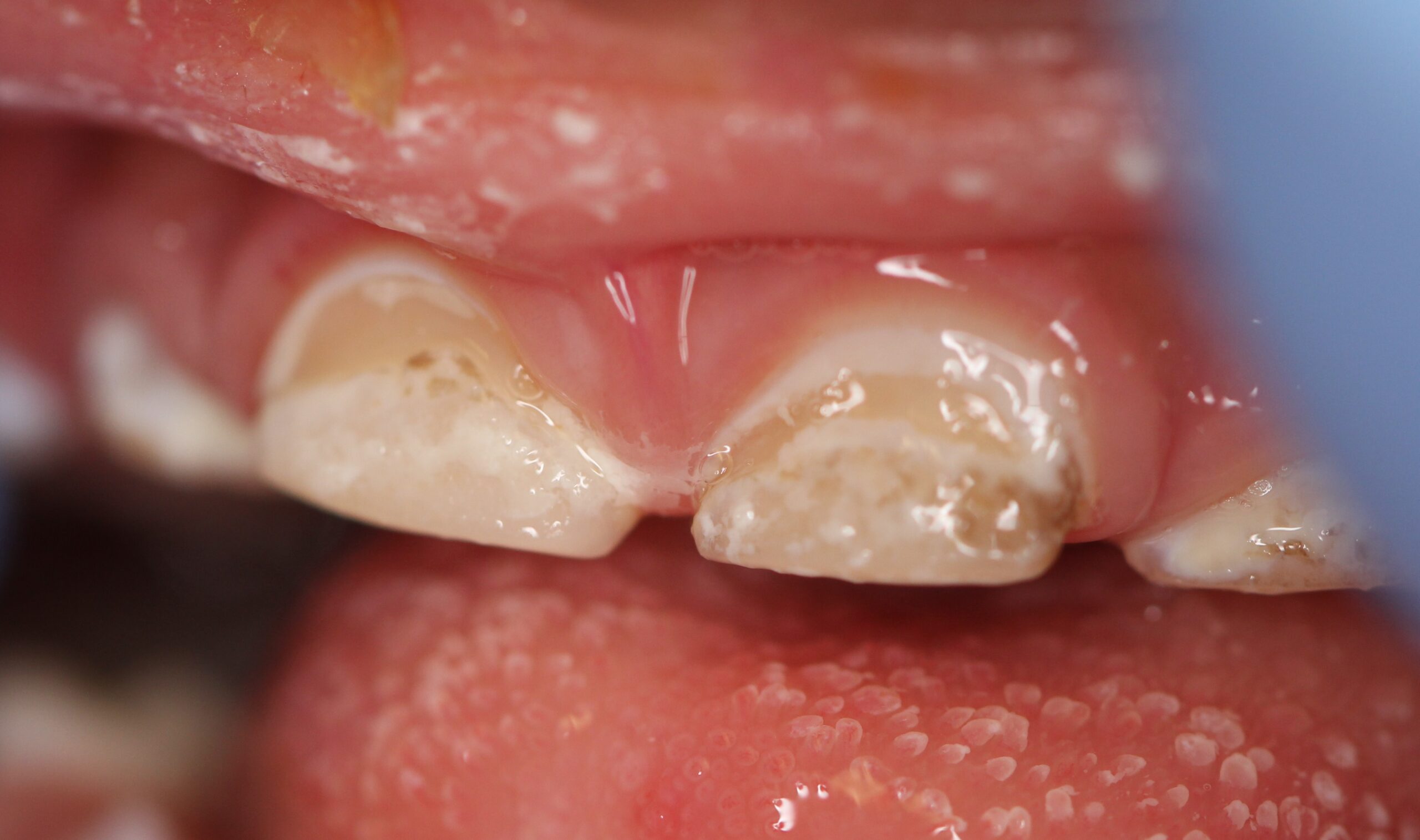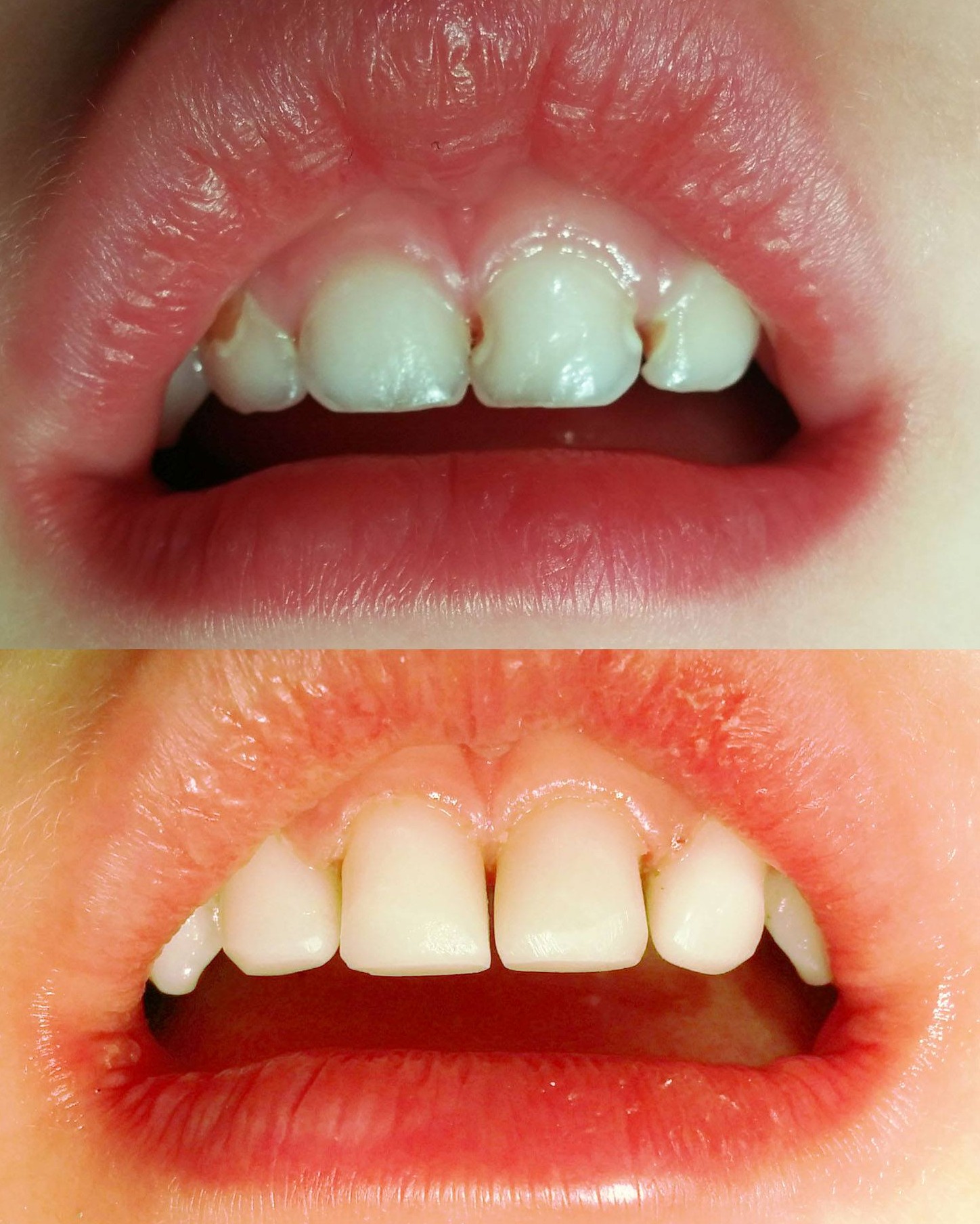My job is to create healthy smiles for children. In young children, cavities on front teeth are common. Weak spots on baby teeth turn chalky white, then brown. Eventually these brown spots can become cavitated, at which point the dentist calls them cavities. If your child is bottle fed or nursed for a long period time, we often see cavities on the front teeth because milk is in frequent contact with front teeth. The transition from the brown spots to cavities can happen very fast. If you see colour changes on your child’s teeth, it may not be just some stain. Bring your child into see a pediatric dentist to see what treatment may be required. Sometimes, I run into parents who do not want to fix front teeth because “they are just baby teeth” and “they will fall out soon.” Here are some facts to help you decide.
- Cavities are bacterial infection.
Bacteria spread and the cavities get bigger with time. The only way to treat this is to excavate the weakened and decayed tooth structure and fill it with strong filling material.
- Front teeth fall out around age 6-8.
If your child is 6 or 7 years old, I often leave small cavities since they will fall out. If the cavities are big and pose a risk for an abscess, it is better to have the tooth treated to prevent a dental abscess from damaging the growing adult tooth.
- Front teeth are important for the child’s self-confidence
There is nothing more heart breaking than a child not wanting to smile because of decayed teeth. Give your child a healthy smile. See the before and after results of the white fillings on front teeth.
Dr. Ella Choi is a certified specialist in pediatric dentistry serving Surrey, White Rock, Delta and Langley in Beautiful British Columbia.


